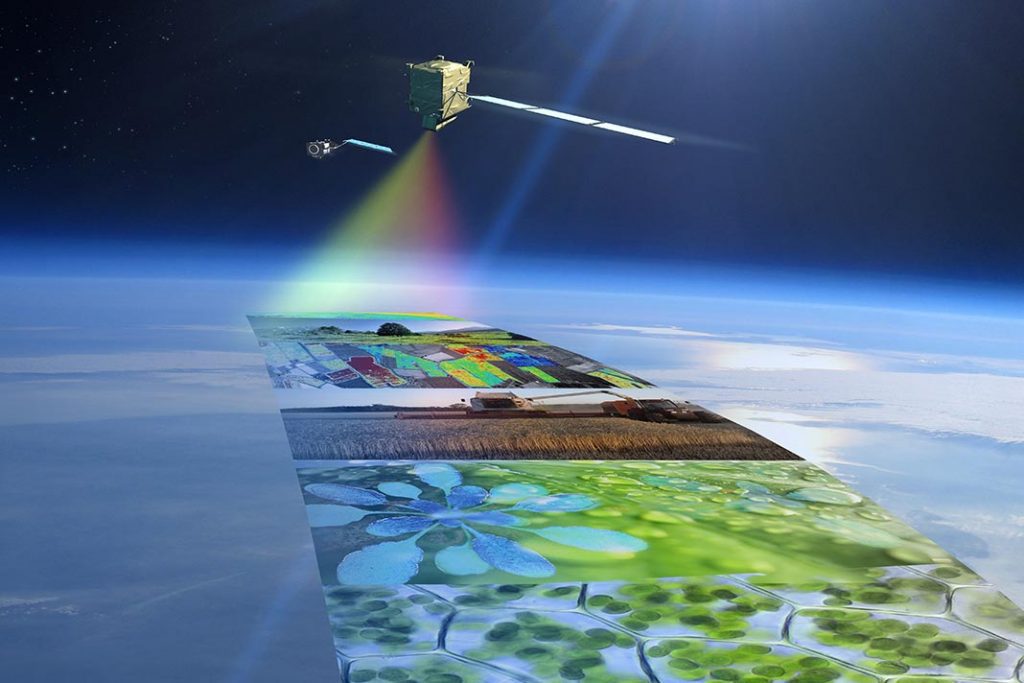Environmental big data and citizen science are playing an increasingly critical role in addressing environmental challenges. These innovative approaches to data collection and analysis are providing unprecedented insight into complex ecosystems and environmental issues. In this article, we will explore the definition and importance of environmental big data and citizen science in the context of environmental science. By the end of this article, readers will have a deeper understanding of how these approaches are driving positive environmental outcomes and supporting sustainability efforts.
Introduction
Environmental science is a field that heavily relies on environmental big data and citizen science. Environmental big data refers to the vast amounts of environmental information collected through various sources, such as satellites, sensors, and citizen science projects. Citizen science is the practice of engaging members of the public in scientific research, typically involving the collection of environmental data.
Environmental big data and citizen science play a crucial role in providing accurate data to researchers, policy-makers, and decision-makers. These tools enable researchers to more precisely assess the state of the environment, monitor changes over time, and identify potential solutions to environmental challenges. Citizen science projects have been successful in engaging and involving the public in environmental research, which in turn leads to increased awareness and understanding of environmental issues.
As technology continues to advance, environmental big data and citizen science will become increasingly important for environmental research and decision-making. Harnessing the power of these tools will be crucial to ensure a sustainable future for the planet.

Advantages of Citizen Science in Environmental Research
Enhanced Data Collection
One key advantage of using citizen science in environmental research is the ability to collect larger volumes of data over wider geographic areas than would be possible with traditional methods. When many people work together to gather information on specific environmental issues or phenomena, researchers can access a vast pool of data that would be difficult or impossible to obtain otherwise. This enables them to better understand complex ecological processes and develop more effective strategies for addressing environmental challenges.
Fostering Public Engagement and Education
Citizen science also plays an important role in promoting public engagement with environmental issues and fostering greater awareness about the natural world. When people participate directly in scientific research, they gain a deeper understanding of the issues at hand and are more likely to take action to protect the environment. Additionally, citizen science projects often provide educational resources and opportunities for participants to learn about various aspects of ecology, conservation, and other related fields.
Cost-Effectiveness
Conducting large-scale environmental research can be expensive and time-consuming for professional researchers. By involving citizen scientists in data collection efforts, researchers can significantly reduce costs associated with fieldwork while still obtaining valuable information. In some cases, citizen science projects may also receive financial support from government agencies or nonprofit organizations, further reducing costs for researchers.
Harnessing Local Knowledge and Context
Citizen scientists often possess unique local knowledge about their communities’ ecosystems that professional researchers may lack. This local perspective can be invaluable when studying specific environmental issues or trying to understand complex ecological relationships within a particular area. By working closely with local residents who are familiar with their surroundings, researchers can gain insights that would otherwise be difficult or impossible to obtain through traditional research methods alone.
Environmental Monitoring Methods used by Citizen Science Projects
Environmental monitoring methods encompass various techniques for measuring environmental aspects such as air and water quality, soil health, and biodiversity.
Citizen science projects can use a wide variety of environmental monitoring methods to collect big data. For example, volunteers can collect water samples for analysis, take photographs of plant and animal species, or monitor air quality using low-cost sensors. By engaging citizens in the data collection process, citizen science projects can collect large amounts of data over a wide geographic area. Environmental monitoring methods used in citizen science projects vary depending on the environmental aspect being measured. Some of these methods include:
- Visual observations: These are relatively easy and inexpensive to perform. However, they may not be precise enough for scientific research purposes.
- Low-cost sensors: These sensors can be used to monitor air and water quality, as well as noise pollution. They are often used in citizen science projects due to their low cost and ease of use.
- Water sampling: Volunteers can collect water samples for analysis, which can provide valuable information about water quality and the presence of pollutants.
- Photographs: Volunteers can take photographs of plant and animal species, which can help researchers track changes in species distribution over time.
- Remote sensing technologies: These can provide highly accurate data, but can be expensive and require specialized equipment and training.
Each environmental monitoring method has its advantages and disadvantages. For instance, visual observations are relatively easy and inexpensive to perform, but they may not be precise enough for scientific research purposes. Remote sensing technologies, on the other hand, can provide highly accurate data but can be expensive and require specialized equipment and training. These are summarized in the table below:
| Method | Pros | Cons |
|---|---|---|
| Visual Observations |
– Easy to perform | – May not be precise enough for scientific research purposes – Limited to visual phenomena – Subject to observer bias and error |
| Low-cost Sensors | – Low cost – Easy to use – Continuous data collection | – Limited accuracy and reliability compared to professional-grade sensors – May require calibration and maintenance – Limited to specific types of measurements |
| Water Sampling | – Provides valuable information about water quality – Can detect the presence of pollutants – Can be used for long-term monitoring | – Requires proper sampling techniques to ensure accurate results – May require specialized equipment for analysis – Can be time-consuming and labor-intensive |
| Photographs | – Can help track changes in species distribution – Provides visual evidence – Can be used for remote and hard-to-reach areas | – May require expertise in species identification – Quality and usefulness of photos may vary – May require a large number of volunteers |
| Remote Sensing Technologies | – Highly accurate data – Can cover large areas – Can detect changes over time | – Expensive – Requires specialized equipment and training – Data processing and analysis can be complex |
Impacting Environmental Policy
Environmental monitoring plays a crucial role in understanding the state of the environment, identifying potential threats, and informing policy decisions. By monitoring environmental data over time, researchers can assess the effectiveness of conservation efforts and identify areas where additional action is needed.
Read more: Leveraging Environmental Big Data for Effective Policy Development: Strategies and Insights
Environmental big data and citizen science are becoming increasingly important for informing environmental policy decisions. By providing policymakers with accurate and reliable information, these tools can help shape policies that promote sustainability and protect the environment.
For example, environmental big data can be used to monitor deforestation rates, track carbon emissions, and identify areas of high biodiversity. Citizen science projects can provide valuable data on the distribution and abundance of plant and animal species, as well as on air and water quality. By incorporating these data sources into policy decisions, policymakers can make more informed decisions about how to protect the environment and promote sustainability.
However, there are also challenges associated with using environmental big data and citizen science in policymaking. For example, there may be concerns about data quality and potential biases in citizen science data. Additionally, policymakers may need specialized training to effectively interpret and use the data provided by these tools.
Despite these challenges, the potential benefits of using environmental big data and citizen science in policymaking make it an important area of research and development. By continuing to invest in these tools and support their use in policymaking, we can promote more sustainable and environmentally-friendly policies.
Read more: Leveraging Environmental Big Data for Effective Policy Development: Strategies and Insights

Best Practices for Integrating Big Data and Citizen Science
Provide Training and Support for Citizen Scientists
In order to address the challenge of ensuring data quality and standardization, it is essential to provide training and support for citizen scientists. By offering comprehensive training materials, online tutorials, and workshops, we can equip volunteers with the necessary skills and knowledge to collect accurate and reliable data. Additionally, providing ongoing support through mentorship programs or expert consultations can help citizen scientists overcome any difficulties they may encounter during their work. This not only improves the quality of the data collected but also empowers individuals to take an active role in addressing environmental challenges.
Utilize Technology and Data Management Solutions
We can leverage technology to streamline data collection and analysis processes in citizen science projects. By utilizing mobile applications, online platforms, and other digital tools, we can ensure that data is collected in a standardized manner, making it easier for researchers to analyze and draw meaningful conclusions. Furthermore, these technological solutions can also be used to manage large datasets effectively and efficiently, reducing the likelihood of errors or inconsistencies. By embracing technology in citizen science projects, we can significantly improve data quality while also making it more accessible for both volunteers and researchers.
Encourage Collaboration with Professional Researchers
Collaboration between citizen scientists and professional researchers is key to overcoming challenges related to data quality, ethical considerations, and participant engagement. By fostering a strong working relationship between volunteers and experts, we can ensure that research questions are well-defined, data collection methods are sound, and results are accurately interpreted. Furthermore, this collaboration allows for valuable knowledge exchange between participants with diverse backgrounds and experiences, ultimately enhancing the overall impact of the project.
Communicate Clear Goals and Expectations
One way to keep participants engaged in citizen science projects is by communicating clear goals and expectations from the outset. This involves outlining what volunteers can expect in terms of time commitment, project duration, tasks involved, and expected outcomes. By providing this information upfront, we can help manage participants’ expectations while also ensuring that they understand their role in achieving the desired outcomes. Additionally, maintaining open lines of communication throughout the project allows us to address any concerns or challenges that may arise along the way.
Crowdsourcing versus Citizen Science
Crowdsourcing is the practice of obtaining information or input into a task or project by enlisting the services of a large number of people, either paid or unpaid. Citizen science is a type of crowdsourcing that involves engaging members of the public in scientific research. Here is a table summarizing the differences between crowdsourcing and citizen science:
| Crowdsourcing | Citizen Science | |
|---|---|---|
| Definition | A process by which individuals or organizations solicit contributions from a large group of individuals or a group of trusted individuals or experts | A form of open collaboration in which members of the public participate in scientific research to meet real-world goals |
| Goal | Obtain a large number of contributions from a diverse group of people to solve a problem or complete a task | Engage the public in scientific projects, including identifying research questions, collecting and analyzing data, interpreting results, and solving problems |
| Purpose | Can be used for a variety of purposes, including problem-solving, data collection, and innovation | Can be used for a variety of purposes, including environmental monitoring, biodiversity research, and public health |
| Contributors | Contributions can come from anyone, regardless of their background or expertise | Contributions come from members of the public who are interested in science and want to contribute to scientific research |
Story: The Power of Citizen Science in Addressing Air Pollution
Participating in a citizen science project that monitored air quality in the local community was an opportunity for a graduate student in environmental science. Along with a group of volunteers, low-cost air quality sensors were placed throughout the area, and data was collected daily.
Over time, the data revealed that air pollution levels in certain areas of the community were significantly higher than in others. It was discovered that a nearby industrial facility was the primary source of the pollution, and this information was brought to the attention of local policymakers.
Thanks to the citizen science project, the issue was addressed, and the facility was required to implement stricter emissions controls. The data also helped inform public health initiatives in the community and raised public awareness about the importance of monitoring and addressing air pollution.
This experience demonstrated the power of citizen science in promoting positive environmental outcomes. By engaging members of the public in scientific research, valuable data can be collected, and real-world change can be driven. Citizen science proves to be an effective way to tackle environmental issues and advocate for meaningful policy change.

Insider Tips: How to Get Involved in Citizen Science Projects
Citizen science projects offer a unique opportunity for individuals to get involved in scientific research and contribute to our understanding of the environment. Here are some insider tips on how to get involved in citizen science projects:
- Start small: Look for local citizen science projects that are easy to participate in, such as bird-watching or water quality monitoring.
- Use online resources: Many online resources are available for finding citizen science projects, such as SciStarter and Zooniverse.
- Join a community: Joining a community of citizen scientists can provide valuable support and guidance for participating in projects.
- Get trained: Many citizen science projects provide training and resources for participants, so take advantage of these opportunities to learn more about the project and how to contribute effectively.
- Have fun: Citizen science projects can be a rewarding and enjoyable way to learn more about the environment and contribute to scientific research, so don’t forget to have fun!
Ethical Considerations
Citizen science projects play a vital role in collecting large amounts of environmental data, but there are ethical considerations to be aware of. These considerations include privacy concerns, informed consent, and data quality.
Privacy Concerns
Privacy is an important consideration when collecting and using environmental data in citizen science projects. Participants need to be assured that their personal information will be kept confidential and not be shared with unauthorized parties. This is particularly important when collecting sensitive data such as geolocation information.
Informed Consent
Informed consent is a crucial aspect of ethical citizen science projects. Participants need to be fully informed about the purpose of the project, the data that will be collected, and how it will be used. They should also be informed about any potential risks associated with participating in the project. This ensures that participants understand the implications of their involvement and can make an informed decision about whether to participate.
Data Quality
Data quality is another important ethical consideration in citizen science projects. To ensure the accuracy and reliability of the data collected, projects must have a clear data collection protocol in place. This includes guidelines for data collection, data storage, and data analysis. It is also important to ensure that participants are trained in data collection methods to minimize errors and biases.
Citizen science projects have the potential to provide valuable insights into environmental issues, but it is important to carefully consider the risks and benefits. By being transparent, ensuring informed consent, and maintaining data quality, citizen science can be a powerful tool for environmental research.

Applications of Environmental Big Data
Environmental big data is a powerful tool that has been used to address a variety of environmental challenges. By providing accurate and reliable data, researchers and policymakers can promote sustainability and drive positive environmental outcomes. In this section, we’ll explore some examples of how environmental big data has been used to inform policy decisions and drive positive environmental outcomes.
Identifying Threats to Ecosystems
Satellite data has been used to track deforestation in the Amazon rainforest, which has helped identify threats to ecosystems. By monitoring changes in forest cover over time, researchers can identify areas that are at risk of deforestation and take action to protect them.
Promoting Conservation Efforts
Citizen science projects have played an important role in promoting conservation efforts. For example, citizen scientists have helped identify areas of high biodiversity, which has led to the creation of protected areas and conservation programs.
Read more: How can technology help conserve biodiversity?
Monitoring Environmental Health
Environmental big data has also been used to monitor the health of ecosystems and identify areas that are at risk. For example, the Chesapeake Bay Program uses data from a variety of sources to monitor the health of the Chesapeake Bay and identify areas that need attention.
Case Studies of Successful Environmental Big Data Projects
There are many successful environmental big data projects that have had a significant impact on sustainability and environmental policy. For example, the Global Forest Watch project uses satellite data to monitor deforestation in real-time, while the Ocean Health Index provides a comprehensive assessment of the health of the world’s oceans.
These projects and others like them demonstrate the power of environmental big data in promoting sustainability and driving positive environmental outcomes. By providing accurate and reliable data, these tools can inform conservation efforts, identify potential solutions to environmental challenges, and promote public awareness and engagement.
Challenges and Limitations
Environmental big data and citizen science offer numerous benefits for environmental research. However, there are also several challenges and limitations that need to be addressed.
Data Quality and Bias
One challenge associated with environmental big data is the quality of the data. As the volume of data collected increases, it can become difficult to ensure the accuracy and reliability of the data. This can lead to bias in the analysis and interpretation of the data and ultimately affect the outcomes of the research.
Specialized Skills and Equipment
Another challenge is the need for specialized skills and equipment to collect and analyze environmental big data. This can be a barrier to participation for individuals who may not have the necessary resources or training.
Public Engagement and Awareness
Public engagement and awareness is crucial for the success of citizen science projects. However, it can be challenging to engage a diverse audience and ensure that participants are representative of the population being studied.
Potential Solutions
To address these challenges, measures can be taken to improve environmental big data and citizen science projects. These include investing in improved data quality control measures, such as implementing standardized data collection protocols and ensuring data is validated by experts. Promoting public engagement and awareness can also help to address bias and improve the quality of the data collected. Providing training and resources for participants can help to address the need for specialized skills and equipment.
Future Directions
The field of environmental big data and citizen science is rapidly evolving. There are many exciting opportunities for future research and innovation, including the development of new technologies for data collection and analysis. Continued expansion of citizen science programs can also help to address challenges associated with data collection and analysis. Machine learning and artificial intelligence can also be leveraged to identify new solutions to environmental challenges.
Conclusion
The use of environmental big data and citizen science is essential for addressing environmental challenges and promoting sustainability. By leveraging these tools, researchers and policymakers can obtain more accurate and reliable information about the environment, which can inform evidence-based decision-making.
Environmental monitoring methods, data collection, and analysis using machine learning and artificial intelligence are all critical components of environmental big data research. Citizen science projects have proven to be a reliable and powerful source of data collection, enabling both scientists and the public to contribute to environmental research.
Crowdsourcing and citizen science have also shown to be vital in enhancing public engagement and awareness about environmental issues. Through these projects, people can actively participate in collecting and analyzing data, which can lead to a stronger sense of community involvement and stewardship.
However, there are ethical considerations to be mindful of when using environmental big data and citizen science. Transparency and informed consent are crucial to ensure that research is conducted ethically and responsibly. It is important to balance the benefits of citizen science and big data research with its potential risks, and to find solutions that minimize any negative impacts.
In summary, the use of environmental big data and citizen science has the potential to drive positive environmental outcomes. It is essential that we continue to invest in these fields, promote public engagement and awareness, and prioritize ethical considerations to ensure that these tools are used responsibly and effectively.
Q & A
Q. Who can participate in citizen science projects?
A. Anyone can participate in citizen science projects. No specialized skills required.
Q. What is the role of environmental big data in policymaking?
A. Environmental big data informs policymakers about the state of the environment.
Q. How can machine learning be used in environmental research?
A. Machine learning can identify patterns in large datasets and help identify solutions.
Q. What is the objection to using citizen science data in policymaking?
A. Concerns about data quality and potential biases in citizen science data.
Q. How can environmental big data promote sustainability?
A. By providing accurate and reliable data, environmental big data can inform evidence-based decision-making.
Q. What is the benefit of crowdsourcing in environmental research?
A. Crowdsourcing can collect vast amounts of data that would be difficult or impossible to obtain through traditional research methods.
Next Steps
Round Table Environmental Informatics (RTEI) is a consulting firm that helps our clients to leverage digital technologies for environmental analytics. We offer free consultations to discuss how we at RTEI can help you.


